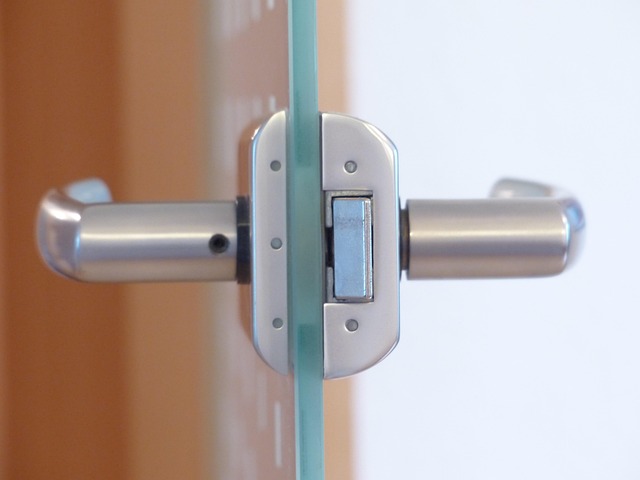Off-grid solar security systems offer a sustainable solution for monitoring remote areas with wireless technology combining solar energy, motion sensors, and high-definition cameras. These rugged components perform well in harsh conditions, providing clear images even in low light and real-time alerts remotely. With 24/7 surveillance capabilities, these systems enhance safety and peace of mind while contributing to environmental sustainability. Key features include robust solar panels, efficient batteries, dependable wireless connectivity, and durable designs. Strategic placement and regular maintenance ensure optimal performance for years, making them ideal for rural areas, wilderness preserves, and developing nations.
Off-grid locations face unique security challenges, demanding innovative solutions. Enter wireless solar-powered cameras—a game-changer in remote area surveillance. This article explores the potential of these cutting-edge off-grid solar security systems, from understanding varied security needs to selecting key features and implementing effective maintenance strategies. Discover how these sustainable cameras can enhance safety without compromising environmental harmony.
- Understanding Off-Grid Security Needs
- The Promise of Wireless Solar-Powered Cameras
- Key Features to Consider for Off-Grid Systems
- Implementation and Maintenance Strategies
Understanding Off-Grid Security Needs

In remote or off-grid locations, where traditional power and internet connections are unavailable, understanding security needs takes on added importance. Off-grid solar security systems step in to bridge this gap, offering a sustainable and autonomous solution for monitoring and protecting these areas. These innovative systems leverage wireless technology, combining solar energy with motion sensors and high-definition cameras to create an integrated network. By utilizing renewable energy sources, off-grid locations can now benefit from enhanced surveillance without the environmental impact associated with fossil fuels.
Each component of these security systems is designed for rugged conditions, ensuring they withstand harsh elements while maintaining optimal performance. Wireless solar-powered cameras, in particular, are equipped to capture clear images and videos even in low-light conditions, enabling users to monitor their properties or territories effectively. With real-time alerts and remote access capabilities, individuals can stay connected and responsive to potential security issues from anywhere, fostering a sense of safety and peace of mind in off-grid environments.
The Promise of Wireless Solar-Powered Cameras

Wireless solar-powered cameras are revolutionizing security in off-grid locations, offering a sustainable and reliable solution for remote monitoring. These innovative devices harness the power of the sun, eliminating the need for cumbersome electrical connections or frequent battery replacements, making them ideal for challenging environments where traditional security systems struggle to thrive. By integrating solar energy with advanced camera technology, these systems provide 24/7 surveillance capabilities, ensuring peace of mind for homeowners and businesses alike in remote areas.
The promise of off-grid solar security systems lies not only in their environmental friendliness but also in their versatility and ease of deployment. Whether in rural communities, wilderness preserves, or even developing nations, wireless solar cameras can be quickly installed, providing immediate security enhancements without the need for extensive infrastructure. This technology fosters a sense of safety and security, enabling users to remotely monitor their properties, detect intruders, or track wildlife, all while contributing to a more sustainable future.
Key Features to Consider for Off-Grid Systems

When considering wireless solar-powered cameras for off-grid locations, several key features become essential. First and foremost, off-grid solar security systems need robust solar panels that can harness adequate sunlight in varying weather conditions. Efficient batteries with high capacity are crucial to ensure continuous operation, especially during periods of low or no sunlight.
Additionally, reliable wireless connectivity is vital for transmitting footage without dropouts or interruptions. Waterproof and durable design is another critical aspect, protecting the camera from harsh environmental elements common in remote areas. Features like motion detection, night vision capabilities, and easy-to-use mobile apps for monitoring further enhance the effectiveness of these systems as off-grid solar security systems.
Implementation and Maintenance Strategies

Implementing wireless solar-powered cameras in off-grid locations requires strategic placement and robust maintenance routines. These remote areas often demand reliable security solutions, making off-grid solar security systems an ideal choice. The key to successful deployment lies in positioning cameras with clear lines of sight to cover vital entry points or assets. Proper orientation towards the sun ensures maximum energy generation during daylight hours, while efficient battery storage systems capture excess power for night-time surveillance.
Regular maintenance is crucial to keep these systems functioning optimally. This includes periodic cleaning of solar panels to maintain high efficiency, checking connections for any loose or damaged wires, and replacing worn-out components promptly. A well-maintained off-grid solar security system can provide years of reliable monitoring, making it an excellent investment for remote sites that require 24/7 surveillance without the hassle of grid connectivity.
Off-grid solar security systems, as exemplified by wireless solar-powered cameras, offer a sustainable and reliable solution for securing remote locations. By harnessing renewable energy and leveraging wireless technology, these systems provide enhanced visibility and peace of mind without the need for traditional power grids. When choosing an off-grid solar camera, consider key features like durable construction, high-resolution imaging, motion detection, and cloud storage to ensure optimal performance in challenging environments. Implementation strategies should include strategic placement, adequate sunlight access, and robust mounting, while regular maintenance, such as cleaning and battery checks, will ensure these systems continue to deliver around-the-clock protection for years to come.
